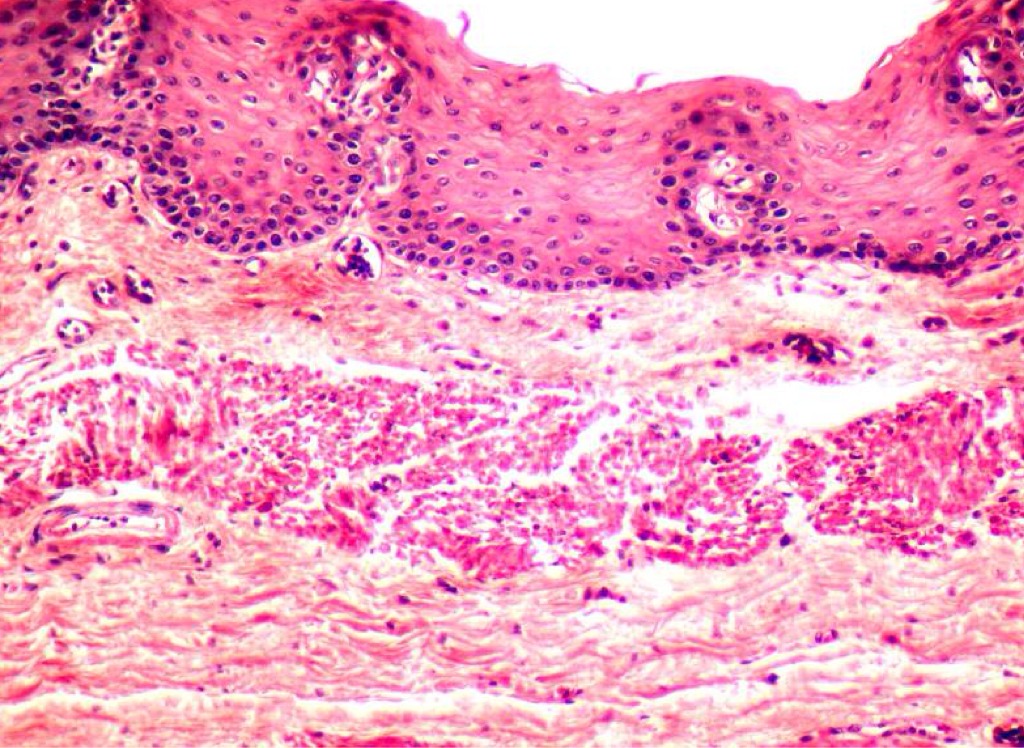Sign up for FlowVella
Sign up with FacebookAlready have an account? Sign in now
By registering you are agreeing to our
Terms of Service
Loading Flow


32. Each type of epithelia is given two names, the first indicating the number of cells present and the second describing the shape of its cells. Simple epithelia are composed of a single cell layer and are typically found where absorption and filtration occur. Stratified epithelia have two or more layers stacked one on top of the other and are common in high-abrasion areas where protection is important. The cells of a simple squamous epithelium are flattened laterally, and their cytoplasm is sparse. In a surface view, the close-fitting cells resemble a tiled floor. This epithelium is thin and often permeable. It is found where filtration or the exchange of substances by rapid diffusion is a priority. In the kidneys, simple squamous epithelium forms part of the filtration membrane and in the lungs it forms the walls of the air sacs across which gas exchange occurs. Simple cuboidal epithelium consists of a single layer of cells as tall as they are wide. The spherical nuclei stain darkly and cause the cell layer to look like a string of beads. The important functions of this are secretion and absorption. It forms the walls of the smallest ducts of glands and of many kidney tubules. Simple columnar epithelium is seen as a single layer of tall, closely packed cells, aligned like soldiers in a row. It lines the digestive tract from the stomach through the rectum. The main functions are absorption and secretion. Pseudostratified columnar epithelium can vary in height, as all of its cells rest on the basement membrane, but only the tallest reach the free surface. This epithelium also secretes or absorbs substances. Stratified squamous epithelium is made of many layers and is very thick and protective. The free surface cells are squamous and the deeper layered cells are cuboidal or columnar. This epithelium is found in areas subject to wear and tear. Stratified cuboidal epithelium is rare in the body and found mostly in the ducts of some of the larger glands (sweat and mammary glands). Stratified columnar epithelium is also rare and small amounts are found in the pharynx, the male urethra, and lining some glandular ducts. This epithelium is also found at transition areas or junctions between two other types of epithelia. Transitional epithelium forms the lining of hollow urinary organs. The cells can vary in appearance also.